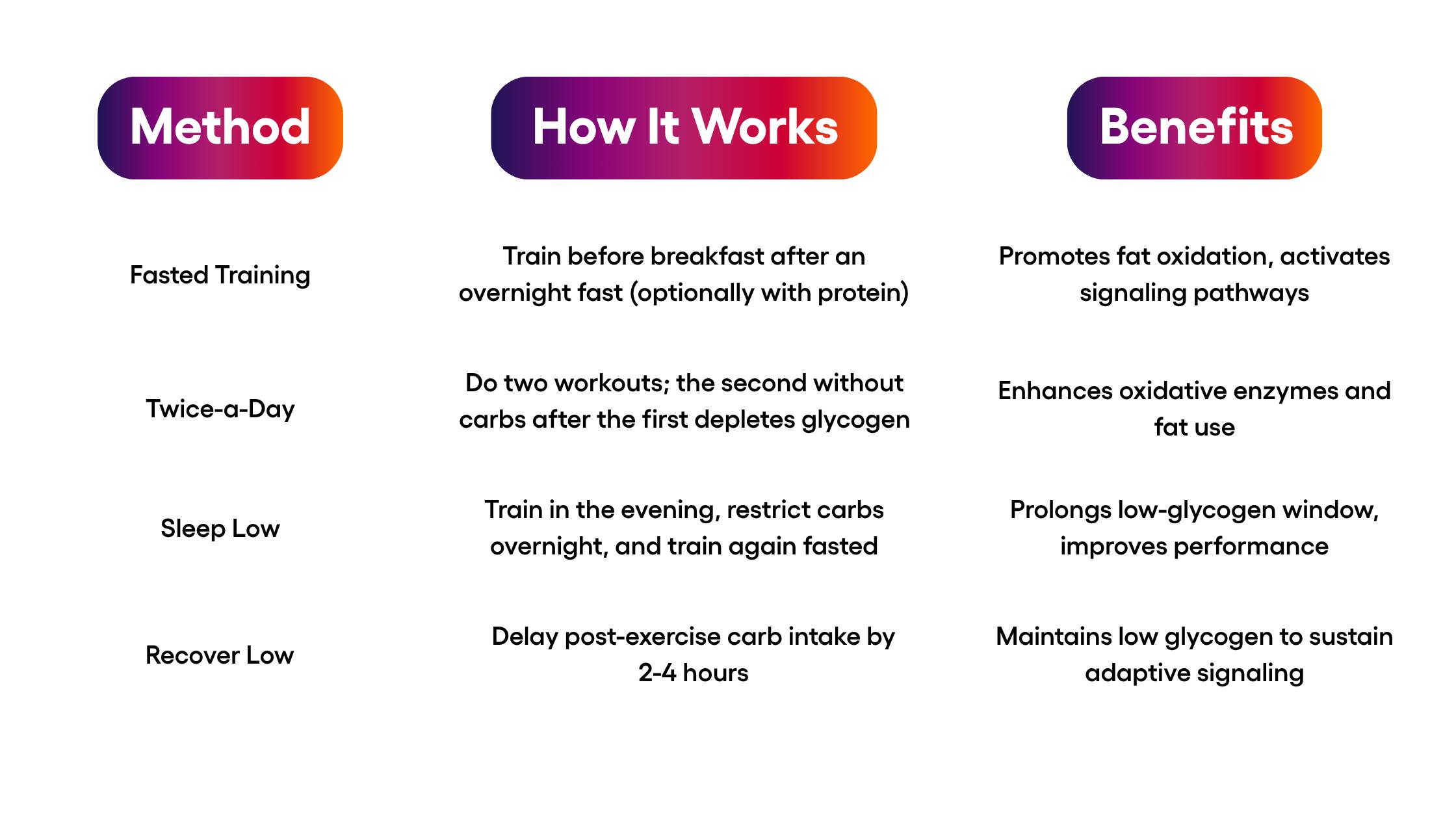How Endurance Athletes Use Carb Periodization to Improve Metabolic Flexibility

By Gaelle Abecassis
|Dec 4, 2022

Carb Periodization Explained
Endurance athletes rely heavily on carbohydrates for peak performance. Low-carb diets, popular for fat-burning, body composition, or metabolic health, can hamper high-intensity training quality and glycogen utilization. Instead, carb periodization offers a strategic balance, fueling intensity while promoting favorable metabolic adaptations.
What Is Carb Periodization?
Carb periodization is the practice of adjusting carbohydrate intake based on the demands of each training session. This includes daily or even meal-based manipulation to match training intensity, duration, and purpose. Key outcomes include:
Maximizing race-day performance through high glycogen availability
Training gut function by practicing mid-session fueling
Rehearsing race-day nutrition with foods, gels, and timing
Enhancing metabolic adaptations through occasional low-carb sessions
This approach helps optimize fat oxidation, training outcomes, and recovery.
Low-Carb Training: Cellular Mechanisms
Training with low carbohydrate availability activates cellular pathways that promote endurance and metabolic efficiency:
AMPK, p38, PPAR, and PGC-1α are stimulated under low glycogen conditions
Increased mitochondrial biogenesis leads to more energy-producing organelles
Enhanced lipid oxidation allows more fat to be used at higher intensities
Angiogenesis improves blood and nutrient delivery to working muscles
These adaptations support improved endurance capacity and metabolic health.
How to Apply Low-Carb Training
There are four common low-carb training methods used to maximize adaptation:

These approaches can be used strategically throughout the training cycle.
Performance Benefits and Research of Low-Carb Training
Low-carb training supports endurance performance primarily through:
Increased fat oxidation
Improved mitochondrial function
Enhanced ability to spare glycogen
While some studies show performance gains in sub-elite athletes, results in well-trained endurance athletes are mixed. Importantly, no studies show a decline in performance from carb periodization, and improved metabolic efficiency may provide a long-term advantage.
Developing Metabolic Flexibility With Carb Periodization
Metabolic flexibility refers to the body's ability to switch efficiently between fats and carbohydrates for fuel. Benefits include:
More stable energy levels
Better blood sugar regulation
Reduced cravings and improved fat-burning
Lower risk for metabolic diseases such as type 2 diabetes and obesity
Carb periodization improves metabolic flexibility by training the body in both low and high carbohydrate states.
How to Get Started with Carb Periodization
Align your carbohydrate intake with your training phases and session goals
Use low-carb sessions to build fat adaptation and high-carb sessions for quality work
Introduce fasted training, sleep low, or recover low methods gradually
Monitor energy levels, training quality, and recovery outcomes
Adjust based on your personal response, with support if needed
Need Support?
Carb periodization can be an effective but complex tool. If you're unsure where to start, working with a coach or using a platform like Humango can help you create a personalized training and nutrition plan aligned with your goals.
Coming Next
In our next post, we’ll dive into relative energy deficiency in sport (RED-S), explore its impact on health and performance, and share nutrition strategies to reduce the risk and support recovery.
References
1. Burke LM, Hawley JA, Jeukendrup A, Morton JP, Stellingwerff T, Maughan RJ. Toward a Common Understanding of Diet–Exercise Strategies to Manipulate Fuel Availability for Training and Competition Preparation in Endurance Sport. International Journal of Sport Nutrition and Exercise Metabolism. 2018;28(5):451-463.
2. Impey SG, Hearris MA, Hammond KM, et al. Fuel for the Work Required: A Theoretical Framework for Carbohydrate Periodization and the Glycogen Threshold Hypothesis. Sports Medicine. 2018;48(5):1031-1048.
3. Jeukendrup AE. Periodized Nutrition for Athletes. Sports medicine (Auckland, NZ). 2017;47(Suppl 1):51-63. doi:10.1007/s40279-017-0694-2
4. Stellingwerff T, Morton JP, Burke LM. A Framework for Periodized Nutrition for Athletics. Int J Sport Nutr Exerc Metab. 2019;29(2):141-151. doi:10.1123/ijsnem.2018-0305.
5. Marquet LA, Brisswalter J, Louis J, et al. Enhanced Endurance Performance by Periodization of Carbohydrate Intake: "Sleep Low" Strategy. Med Sci Sports Exerc. 2016;48(4):663-672.
6. Gejl KD, Nybo L. Performance effects of periodized carbohydrate restriction in endurance trained athletes - a systematic review and meta-analysis. J Int Soc Sports Nutr. 2021;18(1):37.
7. Goodpaster BH, Sparks LM. Metabolic Flexibility in Health and Disease. Cell Metab. 2017;25(5):1027-1036. doi:10.1016/j.cmet.2017.04.015











